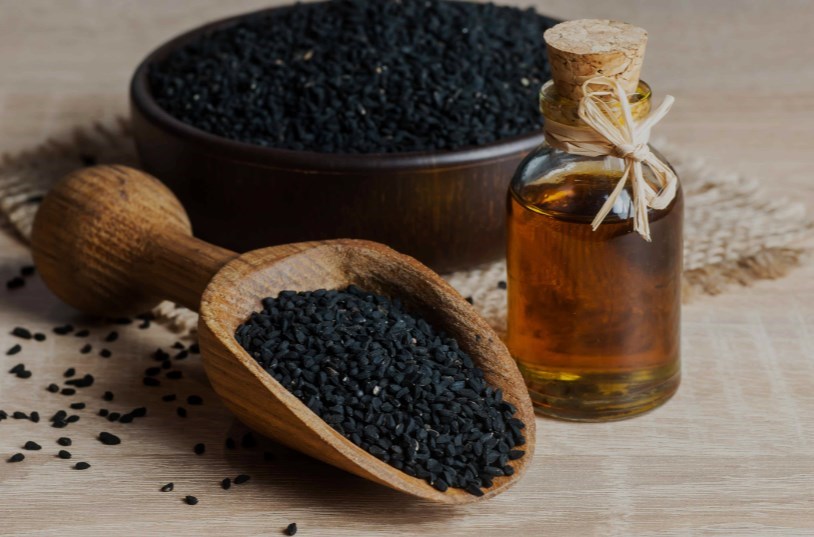Bloating is one of the most frequent complaints that I hear in my office, and the good news is that it is almost always treatable once we have determined the underlying cause. Frequent bloating can be uncomfortable, but for many women it affects their confidence and how they feel about their bodies.
Here are some of the most common things I am looking for when a patient complains of being bloated:
- Intestinal yeast overgrowth
- Food intolerances
- Gluten sensitivity or celiac disease
- Insulin resistance
- Poor food combining
- Irregular meal-times
- Deficiency of digestive enzymes (including lactose intolerance)
- Other causes of dysbiosis – small intestinal bacterial overgrowth or parasites
Some of these conditions can be tested for – food intolerance, gluten sensitivity, celiac, insulin resistance, and in other cases we treat based on the symptoms and history.
1. Intestinal yeast overgrowth:
Intestinal yeast overgrow is extremely common, and it is usually caused by frequent or long-term antibiotic use. The most common scenarios are – many rounds of antbiotics as a child for ear or tonsil infections, long-term antibiotic use for acne (tetracycline or minocin), or antibiotics for frequent urinary tract infections. Antibiotics alter your digestive flora, allowing yeast which are an opportunistic organism, to take over.
When there is too much yeast in the body, you will be bloated and gassy. This is because yeast ferment foods, causing gassiness. Some people will also experience very high sugar or carb cravings, tendency for binge eating, brain fog, fatigue, vaginal yeast infections, and possibly fungal skin infections.
The good news is that this is treatable by rebalancing your intestinal flora with a yeast cleanse: eating a no-sugar diet, taking supplements to kill yeast, and replenishing your intestinal flora with probiotics.
2. Food intolerance
Food intolerance is different from food allergy in that it is a delayed reaction to a food, rather than an immediate response of itching, swelling or anaphylaxis. Food intolerances cause immune stress and inflammation, and this can also irritate the intestinal tract causing bloating. The most common food intolerances are dairy, eggs, certain fruits (banana, citrus, pineapple especially), sometimes nuts (almonds and peanuts are most common), wheat, gluten, corn or others.
Food intolerances can be tested with a blood test to accurately identify them, which takes the guess-work out of eating. Food intolerance would be suspected in someone with a history of allergies, eczema, asthma or a family history of autoimmune disease, but can also be associated with many other skin conditions, digestive disturbances, and low energy. Typically bloating will improve within 4-6 weeks of eliminating any aggravating foods.
3. Gluten sensitivity or celiac disease
Gluten intolerance and celiac disease (a more serious form of gluten-intolerance) are definitely on the rise, largely due to the great changes in wheat over the past 50 years, and also our high consumption of grain products. Many people with a gluten sensitivity will complain of bloating, with or without gassiness, constipation or diarrhea.
There is testing available for gluten intolerance and celiac which does pick up most cases, although many people who test negative, still feel better off gluten. Another marker for gluten intolerance is someone who has low vitamin B12 levels without a vegan or vegetarian diet.
If you suspect that gluten may be a problem for you, a starting point is to do appropriate blood tests to confirm, or to start a 5 week strict gluten-free trial. After 5 weeks strictly off gluten, it is important to challenge it back into your diet to clarify your reaction. There are so many great alternatives to gluten: rice, quinoa, millet, squash and sweet potato to name a few.
4. Insulin resistance
Insulin is the hormone that is released from the pancreas in response to glucose (sugar) in the blood. Insulin levels spike after eating a meal. When insulin is released in a non-insulin resistant (healthy) person, it triggers the body’s cells to utilize glucose and fats from the bloodstream. Insulin resistance occurs when the cells do not respond, or respond weakly to the insulin signal. This results in the body secreting even more insulin, and eventually creating toxic levels of glucose in the blood, known as high blood sugar.
Common symptoms of insulin resistance include: weight gain (often rapid in a period of 2-3 years); intense cravings for carbohydrates and sweets; increased appetite; and feeling tired and bloated after eating.
If you have experienced these signs, and especially if you have a family history of diabetes, you may have insulin resistance. There are blood tests that can confirm insulin resistance. The good news is that this condition is treatable and reversible with diet changes and exercise. The key is to lower your intake of sugar and carbohydrate foods, emphasizing more vegetables, proteins, fiber and healthy fats; and also to start exercising regularly.
5. Poor food combining
Did you know that the types of foods that you eat together can affect how well they are digested? Some people are much more sensitive to this than others. When foods are improperly combined, it slows down the digestive process, and can result in bloating and indigestion.
The biggest rule of food combining is to eat your fruits alone, and not to combine them with other foods, especially proteins. For most people, this is as far as you will need to take it. For example, never eat melon or a fruit salad directly after a fish dinner!
Other rules of food combining are to not combine proteins with carbohydrates. This becomes tricky and almost impossible with a vegetarian diet, but for those of you who eat meat, poultry or fish, try separating your starches and proteins and see how it feels. You may notice much more ease of digestion. For example, have a breakfast consisting of juice fruits; have a mid-morning snack of nuts; eat a lunch consisting of meat, poultry or fish with lots of vegetables; and then have a more carbohyrate-heavy dinner such as a baked sweet potato with grilled vegetables.
6. Irregular meal-times
Another common cause of bloating is simply eating at irregular times. When you go for long hours without eating, or have large amounts of food at bedtime, your digestion (and metabolism) will suffer.For example, skipping breakfast, and then eating a large lunch will almost always cause bloating – it is shocking your digestive system, and also will cause a big rise in blood sugar and insulin as described above. You will end up bloated and tired, searching for caffeine to stay productive in the afternoon.
Our bodies run best with regular and consistent meal times, and our digestive system also functions better with consistency. Aim for a breakfast within 1 hour of waking, a regularly timed mid-day lunch, and dinner before 7pm. Include mid-morning and mid-afternoon snacks if needed.
7. Deficiency of digestive enzymes
Digestive enzymes are produced by the pancreas to help with the breakdown of food into forms that can be absorbed by your body. Enzymes break down proteins, carbohydrates, fats and lactose.
In some cases, the body may not be producing enough digestive enzymes, resulting in bloating, pain, indigestion and irregular bowel movements. A deficiency of digestive enzymes can be caused by: 1) food intolerances causing low-grade inflammation in the intestinal tract; 2) overgrowth of bacteria / yeast / parasites; 3) low stomach acid; 4) chronic stress; and 5) aging.
Lactose intolerance is also a form of enzyme deficiency, where there is insufficient lactase enzyme to breakdown lactose, resulting in poor digestion of dairy products. Lactose intolerance can be tested with a breath test, or with a 2 week dairy-free trial, followed by a challenge (meaning eating dairy products to watch what happens).
A temporary solution to this problem is to take digestive enzymes with your meals, and to avoid dairy if you have a lactose intolerances. It is however important to get to the root of the problem, and treat any imbalances in order to encourage the body to produce sufficient enzymes on its own.
8. Other causes of dysbiosis – small intestinal bacterial overgrowth or parasites
It is very common to have an imbalance in the organisms in the intestinal tract, and in addition to yeast as discussed above, many people also carry extra pathogenic bacteria and even parasites in their digestive tracts. This is more likely if you have traveled recently (especially to Asia, Africa or South America), but even eating out in Toronto you can pick up some nasty bugs. With this type of digestive imbalance, there is also typically diarrhea, weight loss and fatigue.
There is accurate testing for bacterial overgrowth and parasites with a comprehensive digestive stool analysis (ones through US labs are best) to accurately pin-point what is growing. Treatment is then much simpler once the organism(s) have been identified.
Overview
In conclusion, there are many causes of bloating that a Naturopathic doctor is looking for, and this is usually a very treatable condition. It is not normal to need to loosen your pants every night after dinner, or to be too bloated at the end of the day to go out and socialize. I hope this brief article has given you a starting point to improve your digestive health!
Image Source: blogspot.com
Darou Wellness










